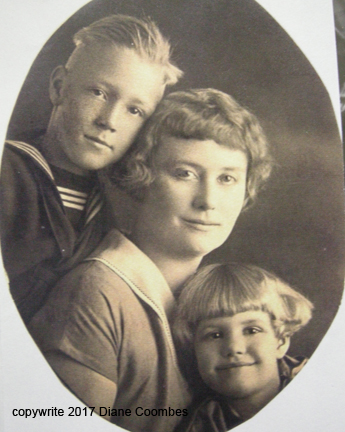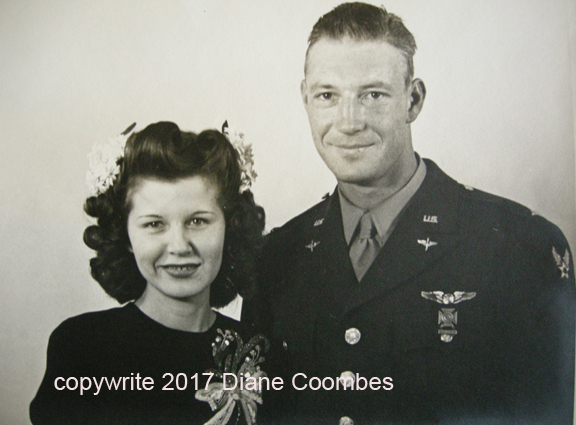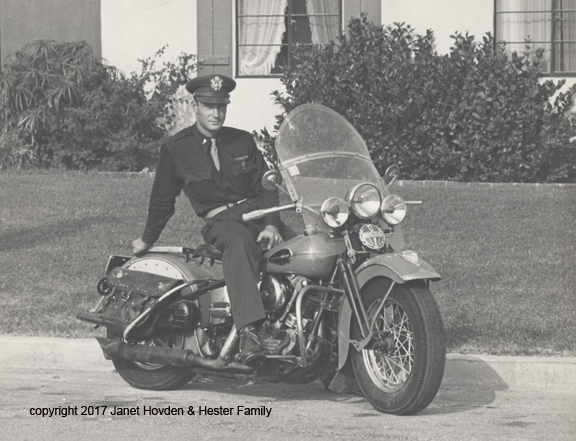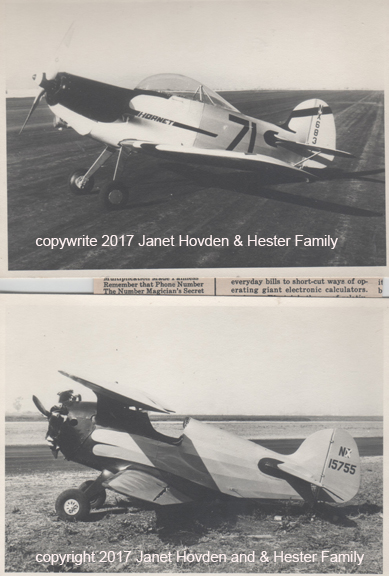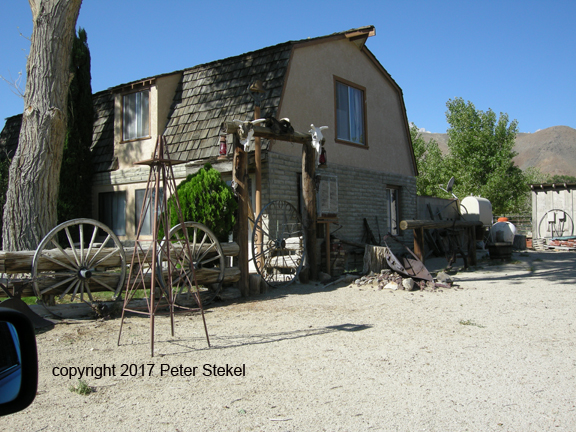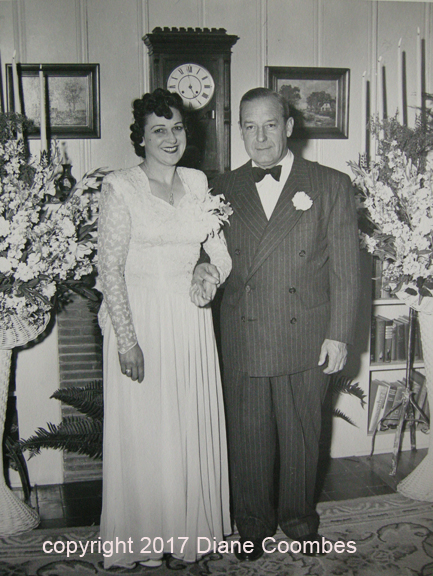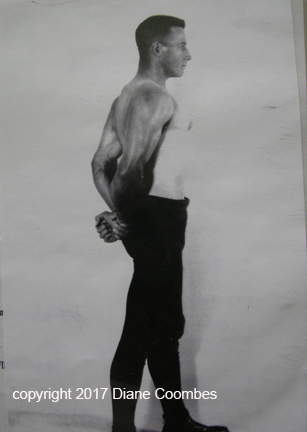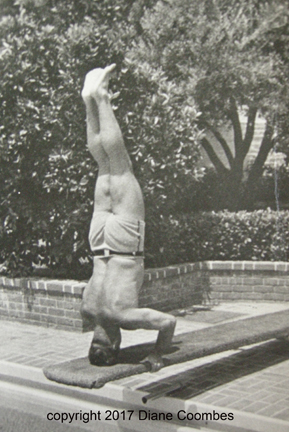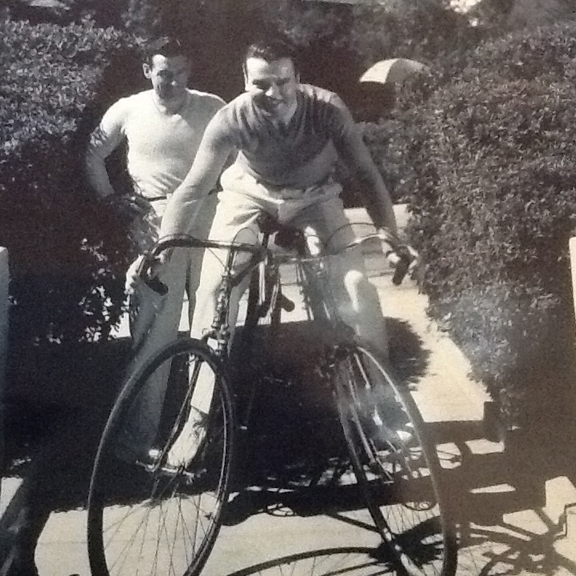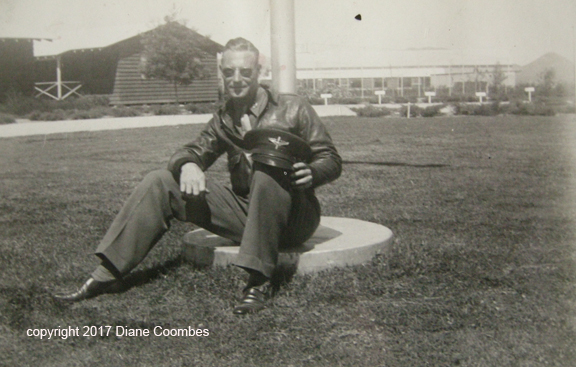|
|
|
Robert M. Hester
|
|
Bob Hester was a lot like his father, Clint. Both let love rule their
lives but it was loss of love that impacted each of them the most. Neither
Clint nor Bob could accept that death takes away forever those closest to
you. For Bob, it was losing his mother, Frances Hester, in 1938 during his
senior year in high school. She lived just long enough to see him graduate
and he was heartbroken to lose her.
(Bob, Frances, and Janet Hester, 1925) For Clint, it was losing his son in 1943 during a training flight. He, too, felt as if the reason for the light in his life had been irretrievably dimmed. From that moment onwards Clint Hesterís life would be one of sadness, tragedy, and finally, irony.
(Some of Bob Hester's high school friends - 1938) Both Clint and Bob faced their sorrow the same way, by retreating into wilderness. Following graduation from University High School in west Los Angeles, and with a close buddy, Bob quickly relocated to Juneau, Alaska for a seasonal job with the United States Forest Service. Clint had always wanted to see Alaska and it must have rubbed off onto Bob that it would be a good place to bury his sorrow. Anyway, he headed there and that is also where he met the love of his life, Miriam Puranen, and was married.
(Miriam and Bob) There was a characteristic of his fatherís that Bob Hester shared. Both liked to go fast. And Bob liked anything that took him there. Cars, motorcycles, or airplanes; it didnít matter. He had definitely inherited that love of fast machines from his father. He even succeeded in wrecking his new car while on a cross-country jaunt with Miriam. Both miraculously escaped injury though the car was a complete wreck.
Long before riding motorcycles was fashionable and anything more than a curiosity, Clint had been riding Americaís quintessential two-wheeler: the Harley-Davidson. In fact, in addition to his duties of helping the Hollywood elite keep buffed out, whenever an actor needed instruction in how to ride one of things for a movie, it was to Clint Hester they came. The family still has photographs of Bob Hester, in his US Army Air Forces uniform, sitting astride one of Clintís Harleys.
Some time shortly after meeting Miriam Puranem in Juneau, Alaska, falling in love and getting married, then returning to west Los Angeles with his bride, Bob Hester took up flying. In 1939, as part of Rooseveltís New Deal economic program, and part of war-preparedness, the Civilian Pilot Training Program (CPTP) began offering aviation classes to civilians. The idea was to build a pool of civilian pilots for military service in the likelihood of war. According to Dominick A. Pisano, "The program was one of the largest government-sponsored vocational programs of its time." It was likely at nearby Clover Field in the tiny southern California resort town of Santa Monica, where Bob took lessons. During the 1930s there were eight flight schools located there; the most popular one being the Pacific School of Aviation, operated by James Granger. But Granger had died in 1936 and itís unknown whether his school or any other survived to participate in the CPTP at Clover Field. In any event, Bob and Miriam Hester were living with Clint and the airfield was just ten minutes away from the Hester home at 11237 Graham Place. Bob Hester had managed to scrape up enough money to purchase an airplane, a Retz R-10 with the tail number of NR-157551. The Retz was a "homebuilt" airplane, meaning the plane was constructed either from "scratch" using a set of plans, or from an assembly kit. It was rather like buying and assembling a model airplane, except the R-10 was full-sized and fully operational.
(The original Retz is below. It was later reconfigured by a friend of the Hester family from a bi-plane to a mono-plane, above) In 1950, Clint Hester bought several acres of property in Lone Pine, within sight of Mt. Whitney and the locus of his search for Bob. By 1952 he had built a 960 square-foot two-story, two bedroom, one bath house, and had retired from the movie business. To some he said, "Lone Pineís a beautiful spot for a retired man," and to others, "I wonít have to go so far to look for Bob." In the front yard, within sight of the highest point in the lower 48, and the main area of his search for Bob and the B-24 Liberatorís mountain grave, he erected a flag pole. Every morning for the next few years Clint Hester raised the colors to salute his son.
Meanwhile, time marched on. In 1955, ever the man in love, Clint married for a third time. Bernice Hester had been married before and brought four children to the relationship.
Living in Hollywood, outside of what was generally acceptable in the 1930s and 1940s, must have had an important impact on Clint Hesterís life. Heíd relocated to Hollywood in the early 1920s from Lincoln, Nebraska with his family. They moved into a cabin in Laurel Canyon, a stoneís throw away from the studios, glamour, and a steady income for a husband and father.
(Clint Hester not only worked as a personal trainer for some of Hollywood's most visible stars, he was a wrestler and a physical education proponent decades before it became fashionable to be so.)
(Clint - in the back - and actor Neil Hamilton - later know as the Commissioner in the television show, Batman, clowning around with a couple of bicycles. Circa 1930s) As George Eliot wrote, "Our dead are never dead to us until we have forgotten them."
(Bob Hester during training, Hemet, CA) Clintís quest would consume him to his death, never to be forgotten not only by family but strangers as well. Over the years, from 1943 until his death, Clint Hester came to be known by hikers, anglers, hunters, and the denizens of eastern Sierra Nevada towns in the Owens Valley as the "Phantom Rider." He may have appreciated the theatre of the sobriquet but certainly never let the nickname distract him from his mission. His quest may have been an interesting topic over coffee in Owens Valley towns or in the gossip of hikers but his determination never wavered. His health in decline, in 1953 Clint returned to live in west Los Angeles at the home he had purchased many years before.
(Clint Hester's home in West Los Angeles) On February 16, 1959, Clint Hester quietly died in his sleep. He was a month shy of 65 years old. The cause of death was "heart failure." Anybody with a trace of love and romance in their soul who had paid attention from 1943 to 1959 would have said Clint Hester died of a broken heart. |
| | Home | The Crews | B-24 Liberator | Media | Links | Images| |
| | The Author | Books by Peter Stekel | Press Packet | Contact | |
|
|Extended end notes from Beneath Haunted Waters|
|
|
copyright 2017 by Peter Stekel - all rights reserved |


